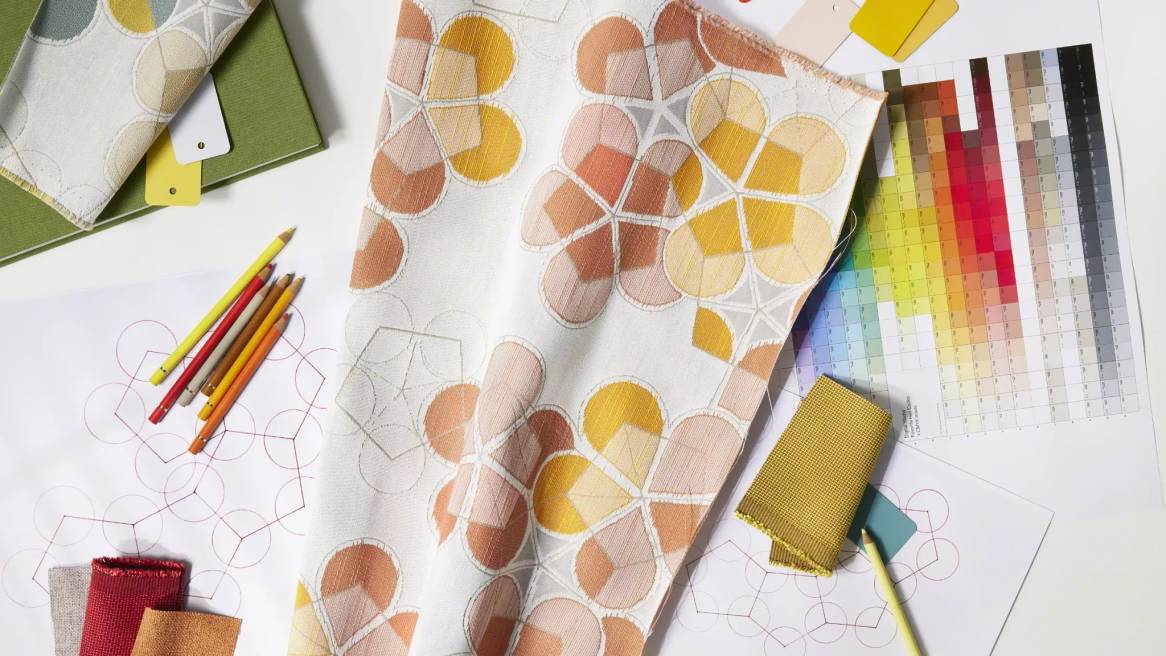A Healing Touch
How Designtex uses neuroaesthetics to create joyful materials.
Designing for health environments that foster calmness, safety and assurance while supporting maintenance, hygiene and disinfection is always a challenge. Designtex, a Steelcase brand, sees this challenge as an opportunity to blend form and function using the principles of neuroaesthetics — the study of how the brain is affected by elements like colors, shapes, and patterns — to develop fabrics that evoke happiness, joy and delight while being durable in health spaces and beyond
Visceral Vibes
Certain patterns and colors stimulate positive emotional states. Our senses – especially vision – take in cues about the environment and immediately formulate a mental response. Scientists say this happens on a subconscious level because we evolved fast visual processing and interpretation for our survival. Humans are known to prefer certain shapes, especially curvilinear and radial patterns, and researchers believe this is because it’s easier for our brains to visually process these shapes that are often found in nature.archaic.1 In fact, the ease of visually identifying these patterns creates a sense of calm and can lower stress.
Colors have effects on us, as well. Cool colors, like blue, correlate with feelings of calm and contentment.2 Warm colors – like orange, pink and yellow – have a strong association with the feeling of joy. For example, more than 75% of subjects in one study on color and emotion linked yellow with joy,3 and researchers think that’s because of our positive associations with sunshine.4 Any unexpected pop of bright, energetic color can serve as a positive distraction and lead to what author Ingrid Fetell Lee described as “a force multiplier for [the] aesthetics of joy, like a concentrated tincture spreading rapidly through a glass of water.” These positive distractions can act as a moment of respite in stressful environments.
Designtex Executive Design Director Sara Balderi is using the principles of neuroaesthetics to design textiles that contain more playful patterns, curvilinear shapes, and energetic colors – materials engineered for around-the-clock use and cleaning required of healthcare and other demanding environments.
“Neuroaesthetics has given us a basis for developing patterns and colors that tune in our innate sensory connections with positive emotions.”

“Form, plus function, plus feeling is a guiding principle for this work.”
Sara BalderiDesigntex Executive Design Director
Designtex works with Steelcase Health to incorporate these new design principles into textiles used in patient and clinician spaces to help bring a new level of warmth and vibrancy to spaces that are otherwise overly institutional.
“Color and pattern can play such a critical role when designing healthcare spaces. Selecting color palettes that are warm and welcoming or calming and soothing, while also reflecting subtle ties to nature, should be key design considerations for healing environments,” says Beth Bronson, Steelcase Health Applications Design Manager. “Healthcare-appropriate textiles that are both beautiful and durable can play an important role in how these therapeutic yet hardworking spaces look and feel to all users: patients, care partners, clinicians and staff. ”


